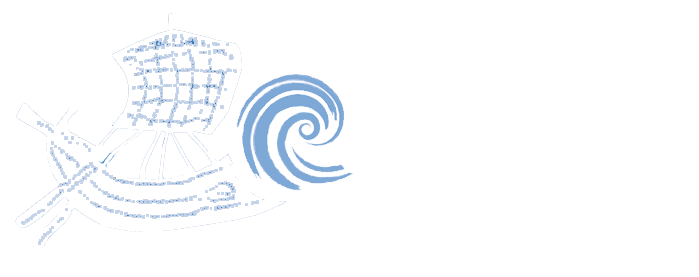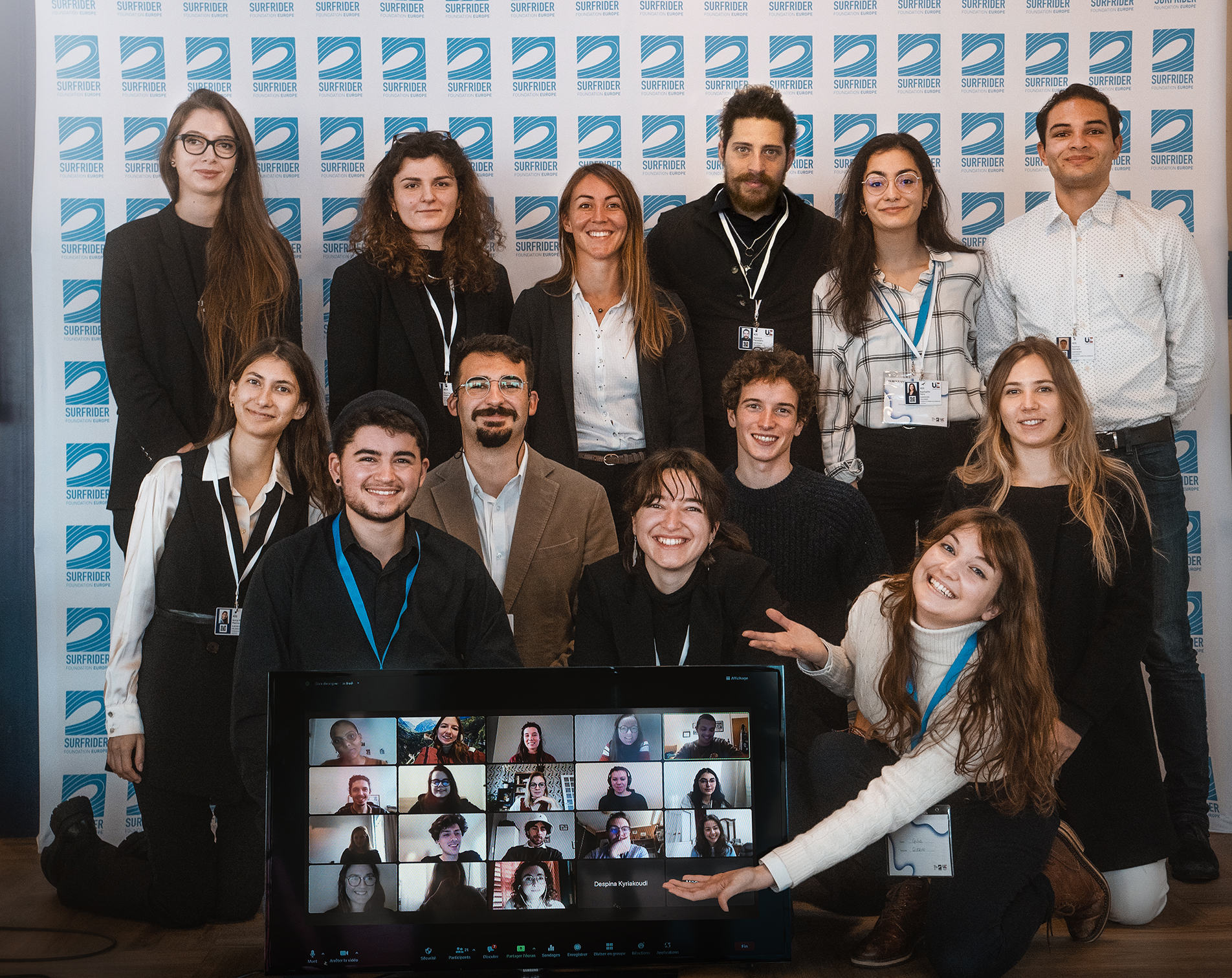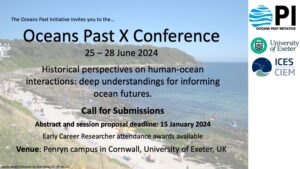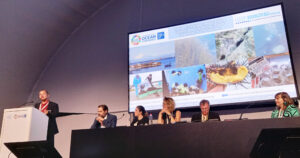by Vassilis PAPADAKIS, Master 2 student MoMArch (Master of Maritime & Coastal Archaeology) and Eurocean Ambassador
& Judith GATT, PhD student at Aix-Marseille University-Centre Camille Jullian & the University of Cyprus, Honor Frost Foundation Scholar and Eurocean Ambassador
How can maritime archaeologists participate in discussions concerning the maritime world and its challenges? How can we become stakeholders that could have a positive impact on EU legislations and directives regarding marine conservation? Can we become professionals that actively contribute to the protection of our Ocean? These questions were formed throughout our participation in the Eurocean’s Youth Network.
Eurocean’s Youth is a network of 106 young European ambassadors for the maritime world launched in 2021 by Surfrider Foundation Europe in partnership with the French Ministry of the Sea. In the framework of the UN Ocean Decade this network aims in forming the next generation of experts in the maritime world regarding two main subjects: the sustainable future of maritime transport and the development of maritime professions.
As young maritime archaeologists, our engagement in this network drew our attention to a reality that we had disregarded for too long: The vulnerability of our ocean and the need to secure its future. A series of webinars which hosted various key players of the European maritime world, and workshops on shipping and blue carriers organized by experts of the field, revealed to us the different aspects and challenges of our ocean. The future of shipping, the different types of marine pollution, the deficient EU legislation on the monitoring of water quality in EU ports and the promising prospects for blue careers were the main topics of these workshops and webinars that have been taking place since November 2021 (until present).
Despite our interest in the above-mentioned subjects, it was surprising to realize that reference to underwater cultural heritage (UCH) in EU directives on marine conservation is absent. What’s more, most colleagues from the network were not aware of the existence of maritime archaeology, and that the preservation of UCH is linked directly and indirectly to marine conservation. As a result, our incentive was to incorporate the notion of UCH in some of the recommendations formed during the workshops in indirect ways (see recommendation 7 & 8). These recommendations were presented at “La Conférence sur l’emploi et les compétences maritimes” in La Rochelle on the 9th--12th of February 2022, by Eurocean ambassadors in the presence of the French Minister of the Sea, Annick Girardin, experts of the maritime field, and European ministers.
This experience was an awakening that confirmed the fact that although our specialty lies in the past, we can contribute to the future. Today’s field of maritime archaeology must be practised in the service of UCH as well as the ocean, the ocean that cradles the cultural heritage we are striving to protect. How? By simply being ocean literate and active members of the maritime world that seeks to prioritize the interest of our ocean. This multi-faceted approach is the future for the promotion of rescue and protection, of the marine environment and UCH. Many times, we are left aside from decision making and policies because we are simply not visible enough in today’s maritime world. It is high time we become key players in this cause for the ocean not only when it comes to legislation and meetings but also in the field.
There are already ongoing projects which have adopted in different ways eco-friendly practices and encourage the involvement of specialists in marine sciences to collaborate, but we must demand more than that. We need to facilitate marine research and data collection during fieldwork that could be used by lawmakers and NGOs that lobby for the protection of our ocean.
For instance, monitoring the seawater quality in the areas we are working and sharing the results with specialists and NGOs (such as Surfrider Foundation) is a promising start. Also informing the next generation of maritime archaeologists about ocean pollution and EU directives on marine conservation in the framework of graduate and master programs will secure an ocean literate generation of maritime archaeologists. And why not promote a label for ‘Blue’ maritime archaeology projects? This label will certify projects that are minimizing their impact on the environment and are contributing to marine science research. For the project to be certified it must apply eco-friendly practices such as minimizing the use of plastic, sponsor eco-friendly diving and swimming gear, collaborate, and facilitate research of ecologists and marine biologists working on marine pollution and contribute to the local community by organizing beach and seabed cleaning during the fieldwork.
Eurocean youth network gave us the opportunity to perceive the ocean not only as an immense source of cultural wealth, but as a hub of marine life that intertwines with our culture. The protection of our ocean should be also a responsibility of maritime archaeologists. Let’s protect the past by also securing the protection of our ocean, the sanctuary of UCH.





